#Ethnographic Museum in Warsaw
Explore tagged Tumblr posts
Text

floresmartialies on twitter notes:
at the Ethnographic Museum in Warsaw we have Polish Miku btw
#Warsaw#Poland#Ethnographic Museum in Warsaw#(from real life)#hatsune miku#miku worldwide#[editor's note: this apparently isn't true anymore D:]
146 notes
·
View notes
Text

I already made a polish Miku in a Lublin region dress, but I also had a mikufied version of the same dress sketched out literally months ago so I had to draw her again!
A silly bonus under cut
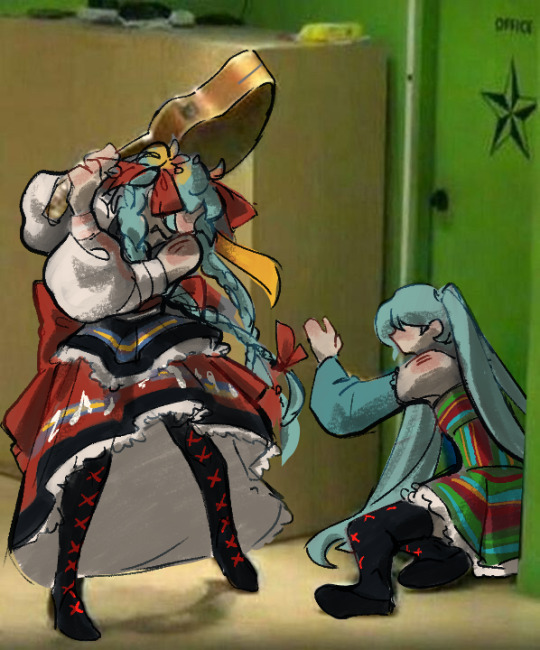
In national ethnographic museum in Warsaw there's a HUGE Miku statue!! I love it so much a huge W, I hope I can see her in person someday BUT I have some personal beef with it because of the costumes they give her, It's not that serious but this idea popped up in my head and I just had to draw it
EDIT:
I've been told by a few people in the tags that the Miku statue is no longer on display, which sucks but it be like that sometimes...
#hatsune miku#vocaloid#miku#my art#fanart#poland#polish miku#artists on tumblr#art#digital art#more sketchy this time but I still like how she turned out!
8K notes
·
View notes
Note
do you like Daniwell-P ?
I LOVE DANIWELL <3
#remember that one time he made a miku song for the polish national ethnographic museum in warsaw#amazing#ask
1 note
·
View note
Text
Woke up in a cold sweat, remembering when I went into the Polish Ethnographic Museum in Warsaw to study traditional clothing only to be greeted by a lifesized Hatsune Miku statue.

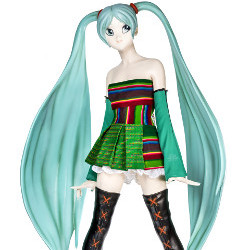
I THOUGHT FOR YEARS THAT THIS WAS A FEVER DREAM! It's real?
They also made her sing a traditional Polish Song? And it's actually pretty good?
youtube
119 notes
·
View notes
Note



Some choice birds from the Warsaw Ethnographic Museum
THIS IS SO AWESOME YAYYY YIPPEEE CHIRP!! 🐦⬛🐦🐓 THANK YOU FOR SHARING I'm so flattered you thought of me like this <3
3 notes
·
View notes
Text

People from the region of Grodno. From the collection of the Warsaw Ethnographic Museum.
1 note
·
View note
Video
vimeo
ICONS exhibition from ◥ panGenerator on Vimeo.
ICONS an exhibition of panGenerator Iconic Things project by the National Ethnographic Museum in Warsaw
Icons – a set of symbols transposing the impenetrable intricacies of digital processes onto a territory accessible to our, still very much Neolithic, minds. By dragging a text file to trash, we succumb to a useful illusion. Truth be told, nothing is in transit: the trash can does not exist; even the text file does not constitute any cohesive physical entity inside any hardware. However, by performing this codified, ritual-driven dance of clicks, taps, and swipes, we conjure digital processes to bring about a happy turn of events. Our exhibition takes a closer look at our shared cultural imaginarium of digital gestures, symbols, and artefacts, dragging them out onto a physical space, enabling audiences a direct, tactile confrontation and – also literally – a different visual perspective. We dispose of the illusive permanence of digital archives, transforming a selfie into a heap of gravel. We ask: “How much of our attention do we make an offering to tech corporations, succumbing to the ritual of ceaseless scrolling?” We perform an act of iconoclasm, deconstructing the cult, iconic Nokia 3310 – the gateway drug of our present-day smartphone intoxication. We place digital icons within baroque frames, depicting emotions associated with them. Paused by our gaze, the progress bar is our way of asking whether technological advancement goes hand in hand with the rejection of magical thinking... As an artistic collective composed of Gen Y / millennials, we have experienced first-hand the dynamic growth of digital culture: from the soothing dial-up tones of modems to video conferencing via Zoom. This exhibition is no different: it touches upon both what is today considered vintage, such as the first Pegasus-compatible (Nintendo Entertainment System clone) video games, and what is currently trending – the up-to-the-minute impact of social media on inter-human communication. We hope that in our exhibition the audience will find a reflection of their own digital culture experience. Even if the mirror is slightly distorting.
0 notes
Text
https://cyfrowaetnografia.pl/collections/show/7 <- a collection of pdfs detailing costumes of various regions
https://strojeludowe.net/ <- whole site in general and in particular https://strojeludowe.net/zrodla-w-sieci/ <- a list of recommended papers you can access in the above linked digital library Cyfrowa Etnografia (sadly the links they provided don't work properly so you have to paste the titles into the search bar on the library site and then find the proper link on the list, the search engine is a bit of a mess O_o)
https://artsandculture.google.com/partner/the-state-ethnographic-museum-in-warsaw <- plenty of pics from the Warsaw museum's collections
also try typing the key phrase "strój ludowy" on polona.pl (using this digital library is a struggle sometimes tbh but the resources are vast)
and also here on tumblr if you haven't stumbled upon them already: polishcostumes and lamus-dworski used to share links, pics etc. so it's likely worth it to visit their archives.
hope this helps <3
polish followers i am on my knees begging for good resources on polish folk costume and maybe some ethnographic museums that have some of their pieces and ensembles available online, preferably 19th to 20th century... please, pdfs on my puter, please można i po polsku, połowę zrozumiem sam, połowę wrzucę do tłumacza i zajebiście 👍
81 notes
·
View notes
Photo

Today’s Miku Module of the Day is:
National Ethnographic Museum by Teresa Seda !
#this is a statue in the national ethnographic museum in warsaw poland#hatsune miku#vocaloid#Teresa Seda#National Ethnographic Museum#piapro#748
163 notes
·
View notes
Photo

A detail from Procession by Miklasiewicz Jaroslaw, 1979 Poland (from The State Ethnographic Museum in Warsaw). I can’t put it into words but I think I understand the symbolism of puking flowers into a toilet on wheels.
592 notes
·
View notes
Text

From National Geographic
March 3, 2022
Ancient Peruvian Wari Queen Face Re-constructed
The Wari timeline stretched from the 7th to 12th century. A National Geographic team explored site in 2012. A team led by the University of Poland along with a Peruvian team found a passage through buried walls, Four women, including a queen and possible princesses. 54 other elite were also found.The excavations included finding a copper ceremonial ax and a silver goblet.
A forensic expert from Sweden has re-created the face of the queen who lived at the site of El Castillo de Huarmey. They used a computed tomography (CT) scanner to make a virtual, 3D image of the skull. The data sent the digital data to a 3D printer, which made a replica of the skull in vinyl plastic.
It's important to know the person's sex, age, weight and ethnicity — factors that influence the thickness of facial tissue
The report in Live Science states that forensic expert Nilsson knew the Huarmey Queen was at least 60 years old. Armed with that knowledge, he put 30 plastic pegs all over the queen's replica skull. After this, he sculpted the face. This was made from the 'inside out,' muscle by muscle.�� He used plasticine clay to sculpt the muscles, relying on methods that help forensic artists reliably rebuild a person's eyes, nose and mouth. "The ears are more speculative," he said.
Next, he covered the muscles with a layer of skin. "Details, wrinkles and poresare sculpted to get it [to be] realistic," he said. "When I'm finished sculpting the face, I make a mold, in which I then cast the face in silicone. In this way, I can get it very realistic. Nilsson used prosthetic eyes in the reconstruction, as well as real human hair that he inserted, strand by strand, into the silicon scalp. "We actually used Peruvian human hair, bought in Peru by the Polish archeological team," he noted. He even gave the royal woman metal earrings with a golden and worn patina. "They are an exact replica of her actual earrings, found in her tomb," he said. Nilsson spent 220 hours on the queen's reconstruction. She looks wise [and] experienced, as well as a bit tired and maybe sad, or thoughtful," The technique Nilsson used to re-create the ancient queen's likeness is also used by law-enforcement agencies when a victim cannot be identified. About 70 percent of these cases are solved once a reconstruction is made, he said. "It is not a portrait of the deceased, but you get a good image of what the face looked like." The Wari queen's reconstruction is now on display in a new Peruvian exhibit at the National Ethnographic Museum in Warsaw, Poland.
Live Science has the report here;
https://www.livescience.com/61216-ancient-wari-queen-reconstructed.html
4 notes
·
View notes
Text
I really want to make a pilgrimage to the national ethnographic museum in Warsaw to pay tribute to the 3m tall statue of Hatsune Miku at the entrance
26 notes
·
View notes
Photo

Mobcap from Poland (back)
The collection of The State Ethnographic Museum in Warsaw
26 notes
·
View notes
Note
Dzień dobry! I've had polish great grandfather who came from the Ashmyany district (Powiat oszmiański) on the turn of the 20th century. Can you suggest, what would be the type of folk costume for that region? Thank you.
Dzień dobry! :) Unfortunately, Kresy were never my area of interest and I never had the time to research much about it. As far as I know there weren’t many defined regional variants, and not much informations survived over time.
Just last month I had an ask from a fellow Polish person who informed me about a book that was released last year, entitled "Znad Niemna i Wilii. Ubiory włościańskie i drobnoszlacheckie Polaków na Grodzieńszczyźnie i Wileńszczyźnie do roku 1914“. I presume there would be some informations collected, but the book’s very hard to get (niche, released by a local cultural centre in Ełk).
I found an excerpt from the book and translated it for you, it paints a good picture of why we don’t have much resources about the area nowadays:
The fact the traditional clothes in the Grodno area died out already at the beginning of 20th century caused huge problems in creation [of the book]. Very few artifacts and iconographic resources can be found scattered across museum in Poland, Lithuania and Belarus. (…) Some of the exhibits [presented in the book] such as half-cap, blouse, kaftan, sheepskin coat, frock coat, czamara, are unique single items [suggested: hard to categorize or group]. (…) From the time when a significant number of Poles left the Vilinius region, almost 70 years have passed. There were groups of entire communities from towns, villages, mansions. What did they take with them on the journey? Most often passports, ID cards, school certificates, extracts from heraldic books, photos. Things were often taken in panic, hurry and fear, and sometimes completely inadvertently. People were leaving in a state they were found, and usually they didn’t have a large supply of clothes or festive outfits. (…) Both world wars continued the work of [cultural] destruction. The war fronts passed through towns and villages. People were losing everything. Then, during the hard postwar times people used old clothes for materials to make something new, more in-line with current fashion trends. Children’s clothes were made out of reused clothing of the adults. Very few original pieces of clothing survived to the present times in the Polish museums. Pre-war collection of the State Ethnographic Museum in Warsaw was completely destroyed as a result of the World War 2.
Source: http://dziedzictwosuwalszczyzny.soksuwalki.eu/ubiory-polakow-znad-niemna-i-wilii/
I only managed to find a few pictures from Oszmiana itself from the interwar period that show rather typical small-town clothing of the era which could be found across most of the country back then. But it might give you an idea of how your grandfather would have dressed like if he stayed in the region, or how people dressed like in general.
Parade in Oszmiana, 1927:


Marketplace in Oszmiana, 1930s:

Church mass, all women wearing headscarves, 1930:

A street picture of the town in 1941, with a women caught in the frame. She’s wearing a striped fabric which I would say were typical for many regions in the eastern areas of Poland:

Children in the village of Zhuprany / Żuprany, undated:

Winter in Zhuprany / Żuprany, undated:

Mass in Zhuprany / Żuprany, description says “before the war”:

And there are surely more!
The only problem with photographs like this, we often just don’t know for sure what nationality were the people portrayed there.
29 notes
·
View notes
Text
Allan Sekula, Art Isn’t Fair. Galerie Michel Reim Paris
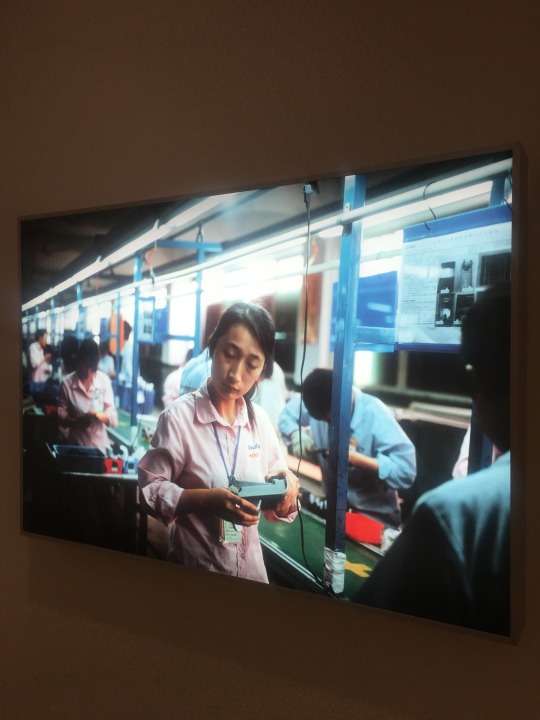
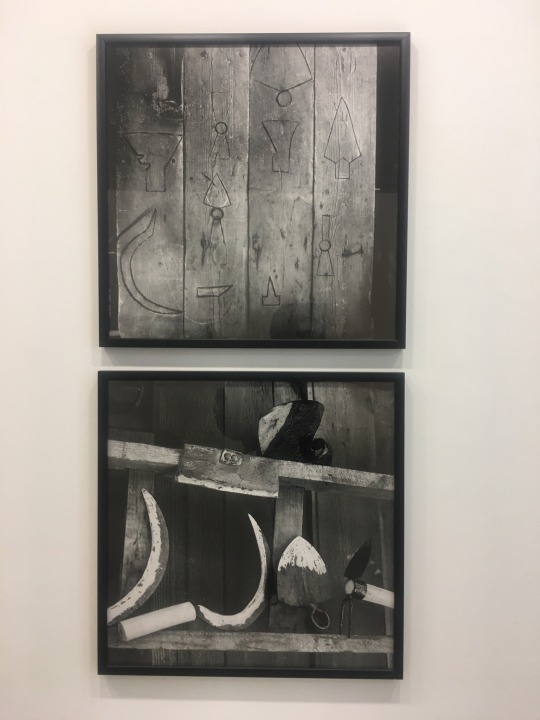
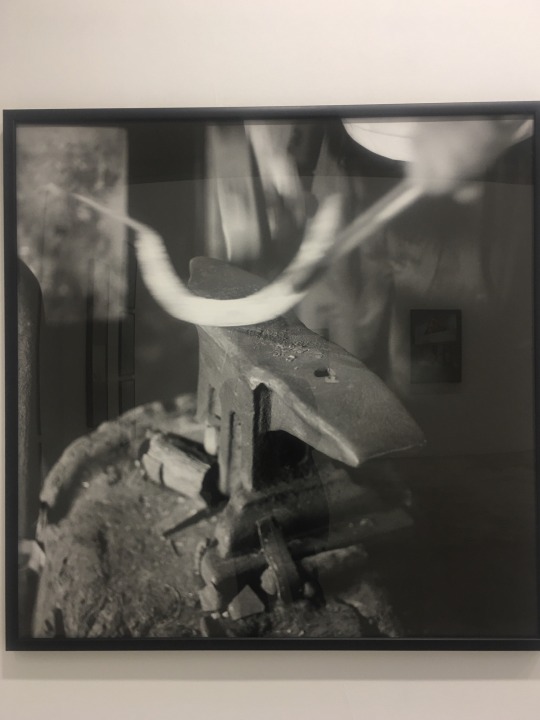
Allan Sekula (1951-2013) est exposé et représenté par Michel Rein depuis 1998. Cette exposition d’automne 2019 présente des œuvres qui couvrent l’ensemble de sa carrière.
1. Eyes closed assembly line, 2008 cibachrome transparency in light box 2. Replica of door to blacksmith’s shed, in situ (original in collection of Warsaw Ethnographic Museum). Ochojno, Poland, July 2009 Polonia and Other Fables series 2007-2009
3. Blacksmith’s work. Ochojno, Poland, July 2009 Polonia and Other Fables series 2007-2009 archival inkjet print mounted on dibon, wooden frame, plexiglas
4. Blacksmith’s work. Ochojno, Poland, July 2009 Polonia and Other Fables series 2007-2009 archival inkjet print mounted on dibon, wooden frame, plexiglas
2 notes
·
View notes
Video
vimeo
Art| Watch This Installation Turn Selfies Into Gravel • Now at the National Ethnographic Museum, is the latest technilogical art installation transforming selfies into gravel.
#Art#culture#Design#Dezeen#Hashtag#Installation#National Ethnographic Museum#Selfies#Technology#Warsaw
0 notes